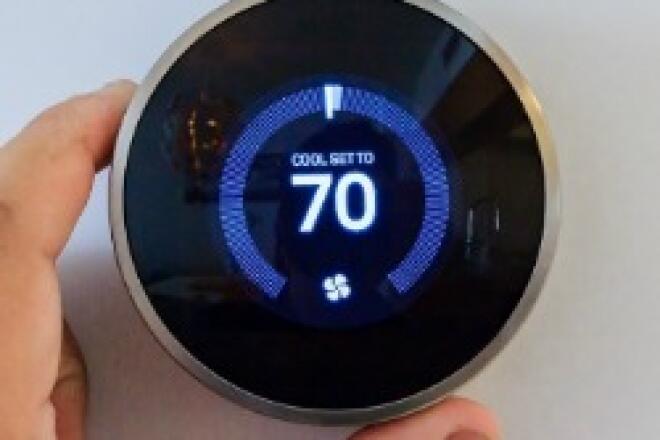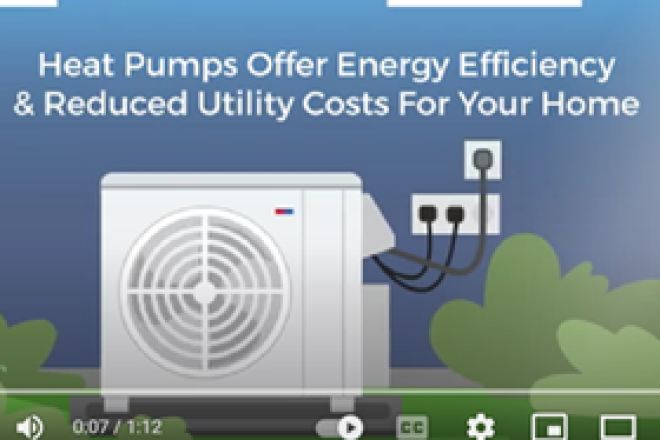
6 Small Steps to an Energy-Efficient Home
As the first day of summer approaches, temperatures are heating up around most parts of the country, which means higher power bills for most.
If you’re looking to minimize the increases to your power bills over the summer months, there are fortunately a lot of different strategies that you can take.
You could, for example, add a smart thermostat to your home, which could lead to savings of 15 percent or more on your cooling costs. You could also upgrade to energy-efficient LED lighting.
Or you could replace any old, inefficient appliances – like a refrigerator or your dishwasher – with ENERGY STAR-certified versions, which could use anywhere from 10 to 50 percent less energy than your current appliance.
While these are great options, there are also a lot of small changes to your home and your daily routine that you can start making today. Let’s look at a few of these:
1. Keep your AC unit’s air filter clean and unobstructed.
The main reason for higher summer bills is an increase in cooling, and that’s a great place to start for energy efficiency. If your air conditioning unit’s air filter hasn’t been changed or cleaned in a while, it could be causing your system to run less effectively. If you have replaceable filters, they should be swapped out every 30-60 days (depending on the type), but if you don’t, you should clean it regularly. This will keep your home’s air clean and your AC running efficiently. Also, make sure that nothing’s blocking the airflow from the filter!
2. Check whether your thermostat is placed on the correct wall.
Did you know that where you place your thermostat in your home can play a major role in how well your AC works? For example, you don’t want to place it near a window that lets in direct sunlight as this could cause your AC unit to run excessively. You also want to avoid placing lamps or appliances (like a TV) close to your thermostat as these can also increase the temperature of the air around your thermostat. For best results, place your thermostat in an interior wall of a commonly used room that’s away from windows, outside doors and appliances that may give off heat.
3. Use blinds and window coverings to the best of your advantage.
According to the Department of Energy, a shocking 76 percent of the sunlight that hits a standard double-pane window enters the home as heat! If any of the windows in your home receive direct sunlight during the day, you should use blinds, curtains and any other window coverings you might have to prevent heat from entering your home. On the other hand, if you have windows that don’t directly receive sunlight, you may want to open the blinds and take advantage of natural sunlight during the day to reduce your lighting costs.
4. Keep cool by using ceiling fans when in a room.
Instead of cranking up your AC when it’s hot out, ceiling fans are a great option to stay cool. It’s estimated that a ceiling fan will enable you to raise your thermostat by four degrees “with no reduction in comfort”, which could lead to some impressive savings over the summer months. Remember that fans cool rooms and don’t reduce the temperature of your home, so turn them off when you leave a room. Also, unbeknownst to many, you need to change a fan’s rotation for hot and cool weather months – make sure air is being directed down toward you in the summer!
5. Carefully consider your options when cooking at home.
Using your oven and stovetop can create a lot of indoor heat during the summer months, causing your AC to work even harder. Not to mention that both require electricity themselves, adding to your power bills. Fortunately, you have some other options. A microwave is likely the more energy-efficient option if you just need to heat something up. And when cooking a full meal, consider grilling outdoors or, if it’s a really hot day, try to find a recipe that calls for little or no heating. If you do use your oven during the summer, be sure not to open door unnecessarily as this can cause a major drop in heat.
6. Turn off unnecessary lights and unplug your devices.
Finally, be sure to turn off lights when you leave a room, especially if you haven’t upgraded to energy-efficient LEDs yet, as these can give off heat and unnecessarily run up your power bill. You can also unplug many of your home’s electronics when you’re not using them – or use a power strip – since many of these still draw power when off, a phenomenon known as “standby power” or “vampire energy”. Also, be sure to unplug laptops or smartphones when they’re between 80 to 100 percent charged to improve battery health and not waste energy.
Now you’re all set to begin taking small steps to improve your home’s energy efficiency this summer. If you’re looking for other ways to cut back your energy use at home, check out our Ways to Save on Energy series of fact sheets.



